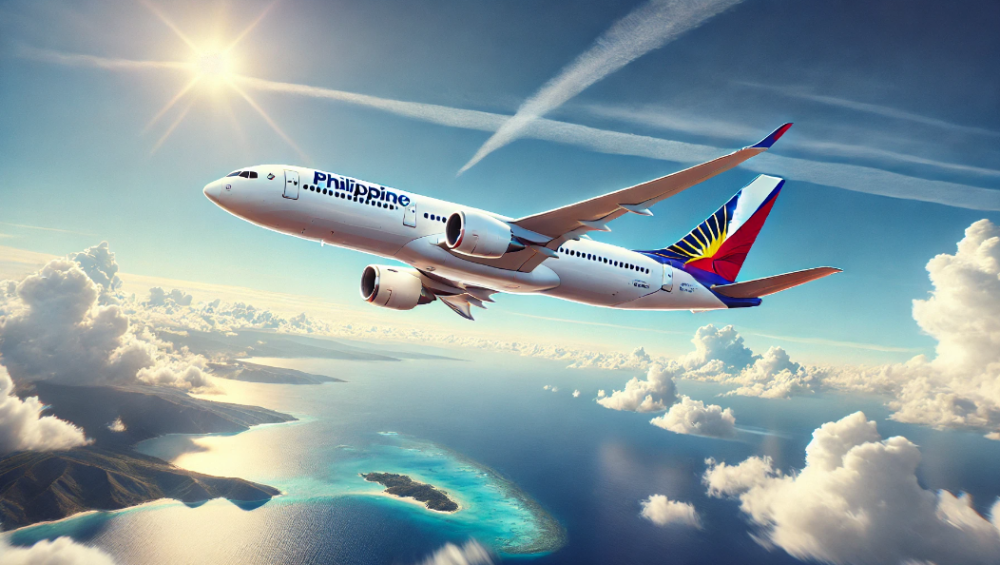The Legacy and Growth of Philippine Airlines
Philippine Airlines (PAL) has long been the pride of the Philippines, serving as the country’s national airline since its establishment in 1941. As Asia’s oldest commercial airline still in operation under its original name, PAL boasts a rich and storied history that reflects its evolution from a small domestic carrier to a globally recognized brand. Over the decades, PAL has expanded its reach, building a reputation for providing world-class service, an extensive flight network, and a commitment to safety and innovation.
From its humble beginnings, Philippine Airlines has played a pivotal role in connecting the Philippines to the world. Starting with domestic flights, PAL gradually ventured into international skies, establishing itself as a key player in the Southeast Asian aviation industry. Known for its warm Filipino hospitality, PAL has won the loyalty of millions of passengers over the years.
As the country’s flag carrier, Philippine Airlines carries not only the responsibility of transporting passengers but also the honor of representing the Philippines on the global stage. This commitment is evident in every aspect of its operations, from its safety standards and modern fleet to its efforts in enhancing the passenger experience with new routes and amenities.
Philippine Airlines: A National Symbol
Throughout its history, Philippine Airlines has weathered political and economic challenges, adapting and modernizing to remain competitive. Today, PAL is more than just a mode of transportation; it is a symbol of national pride, embodying the resilience, hospitality, and progress of the Filipino people. The airline’s dedication to maintaining excellent service has earned it numerous accolades, solidifying its position as one of the most respected carriers in the Asia-Pacific region.
In this article, we will take a deeper dive into the history, services, fleet, routes, and travel tips for flying with Philippine Airlines. Whether you’re planning a trip to the Philippines or considering flying with the airline for international travel, this comprehensive guide will provide useful insights into what makes Philippine Airlines a top choice for travelers. From its commitment to safety and innovation to the experience of flying on one of its modern aircraft, Philippine Airlines continues to shape the future of travel in and out of the Philippines.
History and Evolution of Philippine Airlines
The Early Years: Pioneering Philippine Aviation
Philippine Airlines (PAL) was founded on March 15, 1941, making it not only the oldest airline in the Philippines but also one of the longest-standing carriers in all of Asia. Its creation was driven by the need for a reliable, national carrier that could connect the Philippines’ scattered islands and provide a means of air travel that would boost commerce, tourism, and national unity. At a time when aviation was still a burgeoning industry in Asia, PAL stood at the forefront of this revolution, setting the stage for what would become a landmark institution in Filipino aviation history.
Just five months after its establishment, PAL took to the skies with its inaugural flight on July 22, 1941. The flight operated between Manila and Baguio City using a Beech Model 18 aircraft, a twin-engine plane that could carry five passengers. This initial flight marked a pivotal moment in Philippine aviation, establishing a direct connection between the bustling capital and the highland city, a favorite retreat for both locals and foreigners.
However, PAL’s early momentum was abruptly halted by the onset of World War II. The airline’s operations were suspended as the Philippines, under U.S. jurisdiction at the time, became embroiled in the war. PAL’s aircraft were repurposed for military use, and the entire aviation industry in the region was severely disrupted. This interruption, though challenging, was only temporary.
Post-War Rebirth and International Expansion
Following the end of World War II, Philippine Airlines was quick to resume its operations, playing a significant role in rebuilding the country’s transportation infrastructure. By 1946, PAL had reestablished itself as the national airline, ready to take on the challenge of not only serving domestic routes but also expanding internationally.
One of the most significant milestones in PAL’s early post-war era came on July 31, 1946, when the airline made history by becoming the first Asian airline to cross the Pacific Ocean. PAL’s Douglas DC-4 aircraft embarked on a landmark flight from Manila to San Francisco, with stops in Guam, Wake Island, Honolulu, and finally San Francisco. This historic flight signaled the beginning of PAL’s global ambitions, positioning the airline as a serious player on the international stage.
This inaugural trans-Pacific flight was not just a triumph for PAL but for all of Asian aviation. It demonstrated the technical and operational capabilities of the region’s airlines at a time when long-haul international flights were still considered a challenge. PAL’s successful crossing of the Pacific opened new opportunities for international routes and solidified its status as a pioneering airline in the Asia-Pacific region.
Post-War Fleet Expansion and Domestic Growth
As Philippine Airlines transitioned into the post-war era, its fleet expanded to meet the growing demands of domestic and international travel. The airline upgraded from its wartime aircraft to more modern, passenger-friendly planes like the Douglas DC-3, which could accommodate more passengers and provide smoother, more reliable service. PAL also strengthened its domestic routes, ensuring that even remote provinces and islands were connected to Manila and each other, laying the groundwork for the country’s burgeoning tourism industry.
The airline’s growth during this time reflected the wider post-war recovery happening in the Philippines. PAL became a symbol of national pride, not just for connecting the country’s islands, but also for representing the Philippines on the global stage. Its expanding fleet allowed it to increase its frequency on both domestic and international routes, serving not only cities in the Philippines but also regional hubs in Hong Kong, Tokyo, and Bangkok.
From Regional to International Carrier
With the success of its first international flights, Philippine Airlines continued to broaden its horizons throughout the late 1940s and into the 1950s. PAL added more international destinations to its growing network, including Shanghai, Saigon (now Ho Chi Minh City), Singapore, and Calcutta (now Kolkata). The airline’s ability to establish connections with key cities in Asia helped promote the Philippines as an emerging travel destination while simultaneously offering Filipinos a convenient way to explore the world.
As PAL expanded regionally, it became clear that the airline had ambitions beyond the Asia-Pacific region. In the 1960s, PAL set its sights on further international expansion. The airline added European destinations, such as Rome and Madrid, to its network, further boosting its reputation as a long-haul carrier. These new routes helped make PAL a truly global airline, connecting the Philippines not only to Asia but also to Europe, the Middle East, and beyond.
PAL’s Role in the Philippines’ Economic Development
During its early decades, PAL played a pivotal role in shaping the economic development of the Philippines. As the country’s main airline, PAL provided crucial transportation links for businesses, industries, and government officials. By offering reliable air travel, the airline facilitated commerce and tourism, helping integrate the country’s various regions into a cohesive national economy. PAL’s growing network also allowed the Philippines to position itself as a regional hub, particularly for travel between the United States and Asia.
The airline’s contributions to the Philippines’ economy went beyond simply connecting cities and countries. PAL employed thousands of Filipinos and offered training and development programs that helped build the local aviation industry. From pilots and flight attendants to engineers and ground crew, the airline created opportunities for Filipinos to gain valuable experience in an industry that was rapidly becoming vital to the global economy.
Resilience and Rebuilding
Despite its rapid expansion, PAL faced numerous challenges over the decades, including political instability, economic crises, and natural disasters that periodically affected the Philippines. The airline weathered these difficulties with resilience, adapting to changing circumstances and always striving to maintain its position as the national flag carrier.
In the 1980s, PAL underwent a series of restructurings to modernize its fleet and streamline its operations. The airline introduced new aircraft like the Boeing 747 and Airbus A300, which offered increased passenger capacity and improved fuel efficiency. This modernization allowed PAL to remain competitive in the increasingly crowded aviation market, while still offering its signature Filipino hospitality.
Entering the Jet Age
With the introduction of jet aircraft in the 1960s and 1970s, PAL transitioned to a new era of faster, more efficient air travel. The Boeing 707 became a key part of PAL’s fleet, enabling the airline to offer non-stop flights on long-haul routes. PAL also acquired the McDonnell Douglas DC-10, a wide-body aircraft that allowed the airline to accommodate more passengers and improve the overall travel experience. These advancements solidified PAL’s standing as a major international carrier, capable of competing with the world’s top airlines.
As the airline entered the 21st century, PAL continued to evolve, embracing modern technologies and enhancing its services to meet the changing needs of travelers. Today, Philippine Airlines operates a modern fleet of aircraft, including the Airbus A350 and Boeing 777, which are used for long-haul flights to destinations like New York, London, and Toronto.
From its humble beginnings as a domestic carrier to its transformation into a global airline, Philippine Airlines has remained a pillar of the Philippines’ aviation industry. Its pioneering spirit, commitment to excellence, and role in connecting the Philippines to the world have cemented PAL’s place as one of Asia’s most iconic airlines.
Expansion and Growth: Becoming a Global Carrier
During the late 20th century, Philippine Airlines (PAL) experienced significant growth, evolving from a regional carrier to a global airline with a reputation for connecting the Philippines to key cities around the world. This era marked the airline’s expansion beyond its traditional routes within Southeast Asia, as PAL set its sights on destinations in North America, Australia, Europe, and beyond. As the Philippines continued to grow as a tourist destination and economic hub, PAL’s role in facilitating international travel became more crucial than ever.
Expanding Internationally: Connecting the Philippines to the World
By the 1980s and 1990s, Philippine Airlines had extended its network to include major international destinations, particularly in the United States, where large Filipino communities resided. PAL established direct routes to cities such as Los Angeles, San Francisco, Honolulu, and New York, offering seamless travel between the Philippines and the U.S. These routes became vital lifelines for Overseas Filipino Workers (OFWs) and their families, as well as for Filipino-American communities looking to maintain strong ties with their homeland. PAL’s presence in North America solidified the airline’s standing as a premier carrier for trans-Pacific travel.
As part of its global expansion, PAL also introduced flights to Europe, particularly to key destinations like London, Rome, Paris, and Frankfurt. These routes provided Filipinos with direct access to Europe, while also promoting the Philippines as a top tourist destination for Europeans. The launch of flights to Sydney and Melbourne in Australia further expanded PAL’s reach, catering to both the Filipino diaspora and Australian travelers seeking tropical vacations.
In addition to expanding internationally, PAL strengthened its network across Asia, adding direct flights to Tokyo, Seoul, Hong Kong, Bangkok, and Singapore—all of which became important hubs for business, tourism, and diplomatic relations. This regional presence positioned PAL as a competitive force in the Southeast Asian airline industry, particularly as air travel became more accessible and in demand across the region.
Introducing the Boeing 747 and Airbus A340: Expanding Long-Haul Capabilities
In the 1990s, Philippine Airlines made a strategic decision to introduce wide-body aircraft such as the Boeing 747 and Airbus A340 to its fleet. These aircraft, known for their long-range capabilities and large passenger capacities, allowed PAL to offer more long-haul international flights, connecting the Philippines directly to cities across the globe without the need for stopovers. The introduction of these larger aircraft not only increased the airline’s efficiency on international routes but also elevated the in-flight experience for passengers.
The Boeing 747, commonly referred to as the “Queen of the Skies,” became PAL’s flagship aircraft for its most prestigious long-haul routes, including flights to New York, Los Angeles, and London. The 747’s ability to carry hundreds of passengers made it ideal for PAL’s busiest routes, while its spacious interior allowed for a more comfortable travel experience. PAL also used the Airbus A340 on other key long-haul routes, ensuring that it could compete with other international carriers in terms of service and capacity.
These aircraft not only allowed PAL to grow its international network but also played a significant role in boosting the Philippines’ tourism industry. By making long-distance travel more accessible, PAL contributed to the rising number of tourists visiting the Philippines from Europe, North America, and Australia, helping to solidify the country’s reputation as a world-class destination for travelers seeking tropical adventures, cultural experiences, and business opportunities.
Strengthening the Domestic Network
During this period of global expansion, PAL also focused on enhancing its domestic network, which was crucial for connecting the Philippines’ many islands and remote regions. The airline significantly increased its domestic flights, reaching areas that were previously difficult to access by air. This expansion contributed to the development of tourism in lesser-known destinations like Palawan, Bohol, Siargao, and Iloilo, which saw increased tourist footfall thanks to improved air connectivity.
The enhanced domestic network was also instrumental in fostering economic growth in the provinces, as businesses could now rely on PAL’s dependable service to transport goods, services, and people more efficiently across the archipelago. By investing in both its international and domestic operations, PAL played a central role in the Philippines’ economic development and globalization throughout the late 20th century.
Modernization and Transformation
The 2000s marked a new era for Philippine Airlines as the airline embarked on an ambitious modernization program aimed at staying competitive in the fast-evolving aviation industry. With the rise of low-cost carriers and increased competition on both domestic and international routes, PAL needed to adapt by investing in more fuel-efficient aircraft and improving its overall passenger experience.
Fuel-Efficient Aircraft: The Airbus A330 and Boeing 777
A key part of PAL’s modernization strategy was the transition to more fuel-efficient aircraft, which would allow the airline to reduce operating costs while minimizing its environmental impact. The introduction of the Airbus A330 and Boeing 777 represented a significant shift towards a more sustainable future for the airline.
The Airbus A330 became an essential part of PAL’s fleet for medium to long-haul routes, including those to Australia, the Middle East, and Asia. Known for its reliability and lower fuel consumption, the A330 helped PAL offer more flights at competitive prices, appealing to a broader market of travelers. The A330’s spacious design also ensured that passengers on longer routes enjoyed a more comfortable flying experience.
PAL’s acquisition of the Boeing 777 was another milestone in its modernization efforts. The Boeing 777, one of the most advanced wide-body aircraft in the world, became the flagship for PAL’s trans-Pacific flights, particularly routes to North America. The aircraft’s state-of-the-art features, such as reduced noise levels, improved cabin pressure, and larger windows, significantly enhanced the in-flight experience for passengers. Additionally, the Boeing 777’s fuel efficiency helped PAL lower its carbon footprint, aligning with global trends in sustainable aviation.
By upgrading its fleet with these modern aircraft, PAL could not only provide a better experience for its passengers but also reduce operating costs, allowing it to offer competitive ticket prices and maintain profitability in an increasingly challenging market.
Rebranding and Commitment to Filipino Hospitality
In 2013, Philippine Airlines underwent a major rebranding effort to realign its image with the core values of Filipino hospitality. The airline introduced a new slogan, “The Heart of the Filipino,” to emphasize its commitment to providing passengers with warm, heartfelt service that reflects the famous hospitality the Philippines is known for.
This rebranding initiative was not just a change in messaging but also a broader cultural shift within the airline. PAL introduced new training programs for its crew, with a focus on delivering personalized, attentive service to all passengers. The airline’s goal was to differentiate itself from other carriers by offering a uniquely Filipino travel experience—one characterized by friendliness, warmth, and a genuine desire to make passengers feel at home.
As part of this transformation, PAL also revamped its in-flight services, including its meal offerings, entertainment options, and amenities. The airline introduced more diverse menu options, including traditional Filipino dishes alongside international cuisine, to cater to a wider range of tastes. Additionally, PAL invested in upgrading its in-flight entertainment systems, providing passengers with a better selection of movies, TV shows, music, and games to enjoy during their flights.
Continuing to Lead in the Digital Age
As technology continued to reshape the airline industry, PAL embraced the digital age by enhancing its online booking system and mobile app. These improvements made it easier for passengers to book flights, manage reservations, and check in, all from the convenience of their smartphones or computers. The airline also adopted digital innovations such as self-service kiosks at major airports, expediting the check-in process and reducing waiting times for passengers.
By embracing new technologies and continually refining its operations, Philippine Airlines has positioned itself as a forward-thinking airline that blends tradition with modernity. As it continues to grow and evolve, PAL remains committed to its role as the Philippines’ national carrier, providing reliable, comfortable, and heartfelt service to travelers from all over the world.
These efforts in modernization and transformation have not only strengthened PAL’s position in the competitive global aviation market but have also ensured that it continues to represent the heart of the Filipino spirit in every journey. Today, PAL stands as a beacon of Filipino pride, with a commitment to delivering world-class service and connecting the Philippines to the rest of the world.
Philippine Airlines Fleet: Safety and Modernity
Philippine Airlines operates a diverse and modern fleet that caters to both short domestic routes and long international flights. The airline focuses on maintaining a fleet that combines comfort, safety, and efficiency, adhering to strict international aviation standards.
Wide-Body Aircraft for Long-Haul Flights
- Airbus A350-900: One of the newest additions to PAL’s fleet, the Airbus A350-900 is used for long-haul flights to North America and Europe. This aircraft is known for its fuel efficiency, spacious cabin, and advanced aerodynamics. Passengers enjoy quieter flights, larger windows, and improved cabin humidity levels, contributing to a more comfortable flying experience.
- Boeing 777-300ER: The Boeing 777 is the airline’s flagship aircraft for long-haul routes, including flights to Los Angeles, New York, Toronto, and London. It is recognized for its spacious interior and high fuel efficiency, ensuring a smooth, comfortable journey.
Narrow-Body Aircraft for Shorter Flights
- Airbus A321neo: The Airbus A321neo is used primarily for regional flights across Southeast Asia, China, Australia, and Japan. Its modern design and fuel efficiency make it ideal for medium-haul routes.
- De Havilland Dash 8-400: For shorter, domestic flights, particularly to more remote islands in the Philippines, PAL utilizes the De Havilland Dash 8-400. This aircraft is known for its reliability and ability to land on shorter runways, allowing it to serve regional airports.
Routes and Destinations: Connecting the Philippines to the World
Philippine Airlines offers a comprehensive network that spans domestic and international destinations. The airline’s mission is to connect the 7,000+ islands of the Philippines while providing global connectivity to passengers flying to and from the country.
Domestic Network
PAL serves over 30 domestic destinations, offering daily flights to major cities and provinces, including:
- Manila: The primary hub and gateway to international destinations.
- Cebu: Known for its stunning beaches and vibrant city life, Cebu is another major hub for PAL’s domestic and international flights.
- Davao: A key city in Mindanao, known for its natural beauty and as a growing economic center.
- Boracay (Caticlan): A gateway to one of the most famous beaches in the world.
- Palawan (Puerto Princesa): Renowned for its crystal-clear waters and pristine natural environment.
International Network
Philippine Airlines flies to over 40 international destinations, connecting the Philippines to North America, Europe, the Middle East, and Asia. Key international routes include:
- North America: Direct flights to Los Angeles, San Francisco, New York, Toronto, and Vancouver.
- Asia: Popular destinations include Tokyo, Seoul, Hong Kong, Singapore, and Bangkok.
- Australia: PAL operates direct flights to Sydney, Melbourne, and Brisbane.
- Europe: The airline offers non-stop service to London, making it a vital link between the Philippines and the United Kingdom.
PAL’s extensive route network provides vital connections for business travelers, tourists, and expatriates traveling between the Philippines and their respective regions.
In-Flight Experience and Service
Philippine Airlines prides itself on offering a world-class in-flight experience, characterized by warm Filipino hospitality. Whether you’re flying economy, premium economy, or business class, PAL aims to ensure comfort, convenience, and safety.
Economy Class
- Comfortable Seating: PAL’s economy class offers ergonomic seats with adjustable headrests, ample legroom, and personal screens for in-flight entertainment.
- In-Flight Entertainment: Passengers can enjoy a variety of movies, TV shows, and music through the airline’s entertainment system.
- Delicious Meals: PAL serves a selection of Filipino and international cuisine, with options for special dietary requirements, including vegetarian and halal meals.
Premium Economy Class
- Extra Legroom and Recline: Premium economy seats offer more space and greater recline compared to standard economy.
- Priority Services: Passengers in this class enjoy priority boarding and baggage handling, as well as complimentary amenity kits.
Business Class
- Luxurious Seating: Business class passengers can enjoy lie-flat seats, offering ultimate comfort on long-haul flights.
- Fine Dining: PAL’s business class features gourmet meals, including a selection of premium wines and beverages.
- Personalized Service: The attentive cabin crew in business class ensure passengers receive personalized, attentive service throughout the flight.
Travel Tips for Flying with Philippine Airlines
- Book in Advance: To get the best fares, book your flights with Philippine Airlines well in advance, especially during peak travel seasons like Christmas and Holy Week.
- Check Travel Requirements: Ensure that you are aware of the travel requirements for your destination, such as COVID-19 regulations, visa requirements, and health certificates.
- Use the PAL App: Philippine Airlines has a user-friendly mobile app that allows you to check-in, manage bookings, and track flight status with ease.
- PAL Mabuhay Miles: Sign up for PAL’s frequent flyer program, Mabuhay Miles, to earn points for every flight and redeem them for free flights, upgrades, and other rewards.
- Arrive Early: For domestic flights, arrive at the airport at least two hours before your flight. For international flights, give yourself at least three hours to account for check-in and security procedures.
As the Philippines’ flag carrier, Philippine Airlines continues to play an essential role in connecting the country to the world. With its wide range of destinations, modern fleet, and signature Filipino hospitality, PAL remains a top choice for travelers seeking comfort, convenience, and reliability. Whether you’re flying domestically to explore the islands or embarking on an international adventure, Philippine Airlines offers a seamless travel experience that combines the best of Filipino culture with world-class service.



